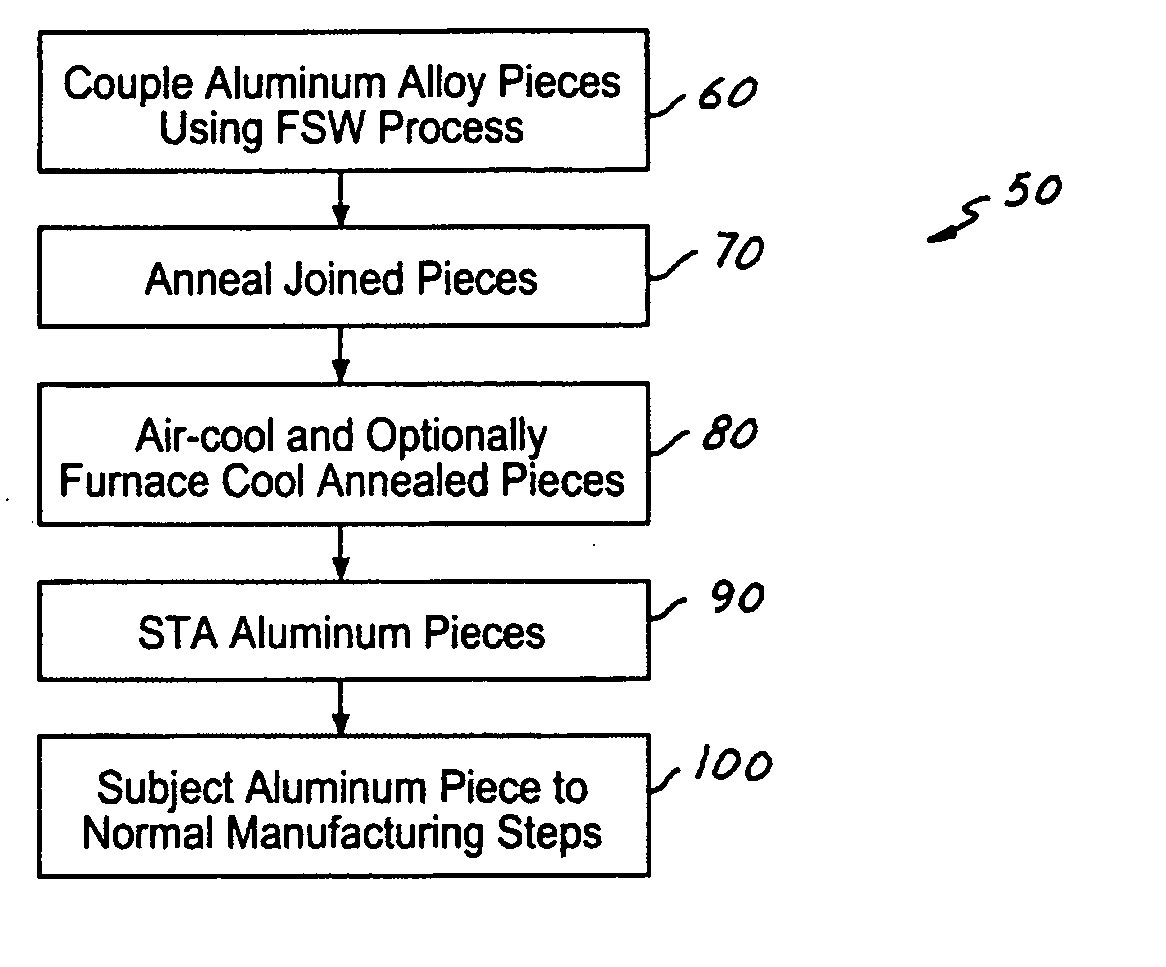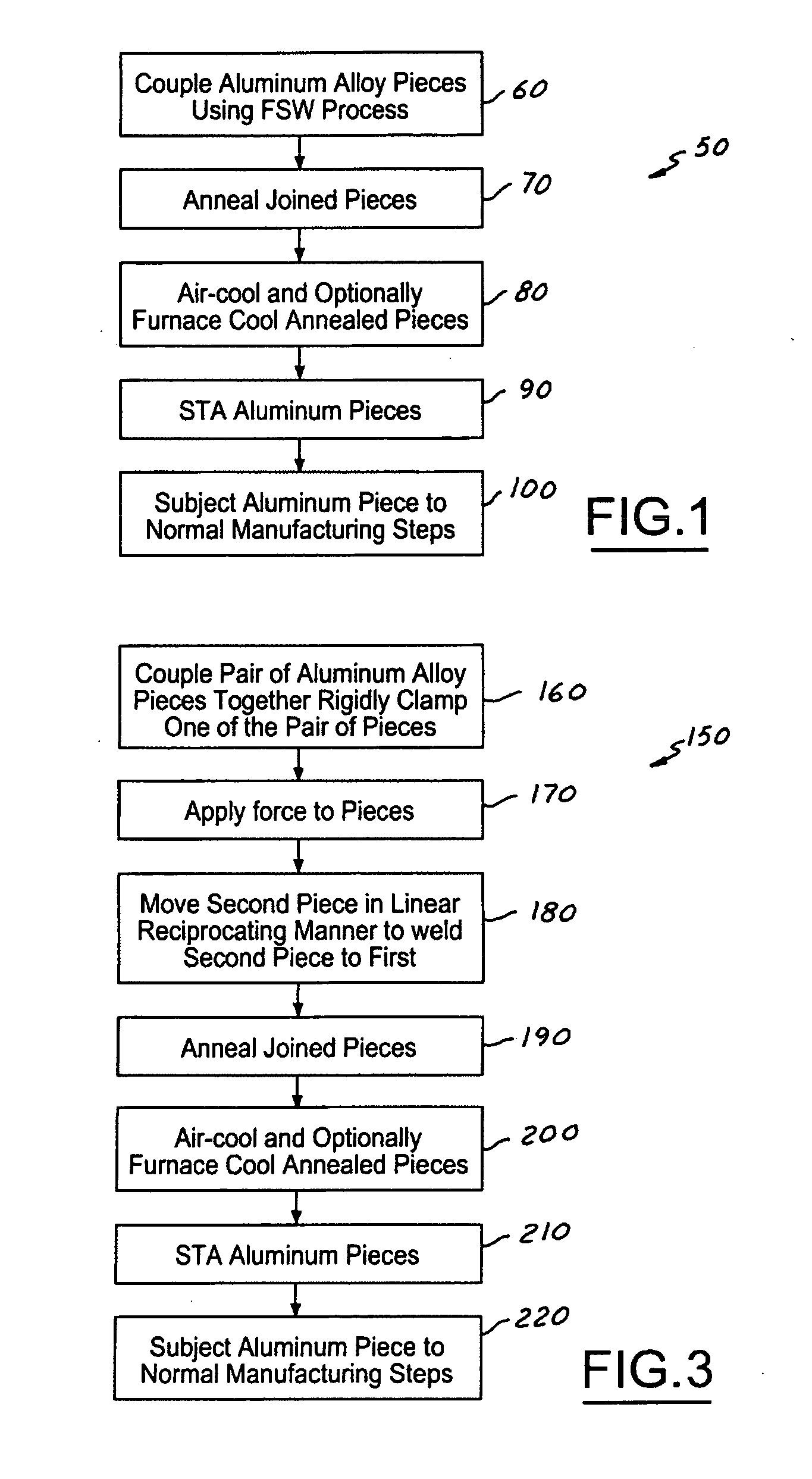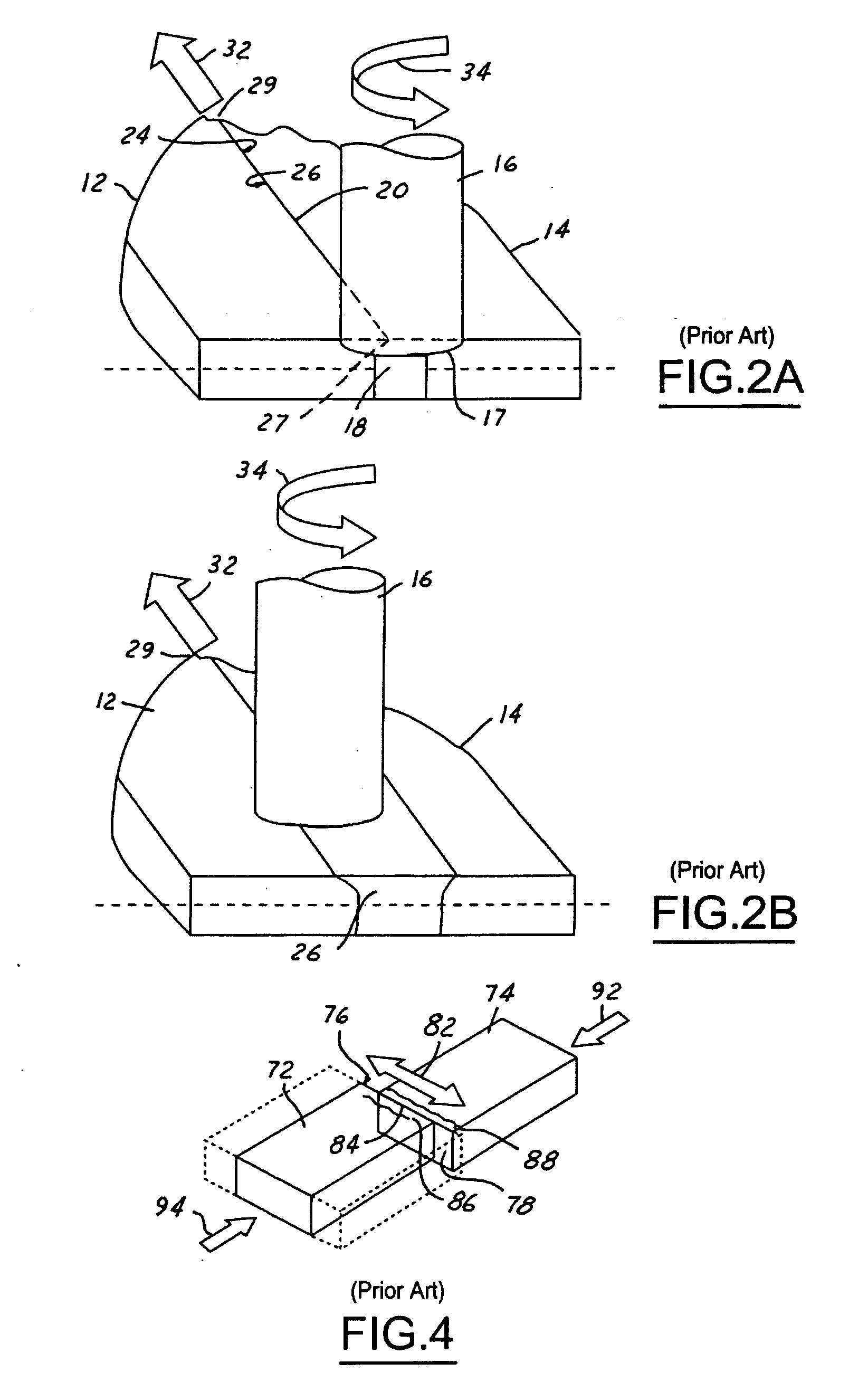Method to improve properties of aluminum alloys processed by solid state joining
a technology of solid-state joining and aluminum alloy, which is applied in the field of preparing aluminum alloys, can solve the problems of insufficient energy of the material for recrystallization, and achieve the effect of reducing original ductility and restoring mechanical strength
- Summary
- Abstract
- Description
- Claims
- Application Information
AI Technical Summary
Benefits of technology
Problems solved by technology
Method used
Image
Examples
Embodiment Construction
[0020] Referring now to FIG. 1, logic flow diagram and diagram for producing an aluminum alloy article utilizing a solid state joining process is shown generally as 50.
[0021] The process starts in Step 60 by coupling together two parts 12, 14 of aluminum alloy using a conventional friction stir welding (“FSW”) process.
[0022] As best shown in FIGS. 2A and 2B, in a conventional FSW process, a cylindrical-shouldered friction stir welding tool 16, with a profiled threaded / unthreaded probe (nib) 18 is rotated at a constant speed and fed at a constant traverse rate into the joint line 20 between two parts 12, 14 of sheet or plate aluminum material, which are butted together. As best shown in FIG. 2A, the parts 12, 14 have to be clamped rigidly onto a backing bar (not shown) in a manner that prevents the abutting joint faces 24, 26 from being forced apart while the nib 18 is placed at a position along the joint line 20. The nib 18 is then rotated at a constant rate (shown by arrow 34) as...
PUM
| Property | Measurement | Unit |
|---|---|---|
| Temperature | aaaaa | aaaaa |
| Temperature | aaaaa | aaaaa |
| Temperature | aaaaa | aaaaa |
Abstract
Description
Claims
Application Information
 Login to View More
Login to View More - R&D
- Intellectual Property
- Life Sciences
- Materials
- Tech Scout
- Unparalleled Data Quality
- Higher Quality Content
- 60% Fewer Hallucinations
Browse by: Latest US Patents, China's latest patents, Technical Efficacy Thesaurus, Application Domain, Technology Topic, Popular Technical Reports.
© 2025 PatSnap. All rights reserved.Legal|Privacy policy|Modern Slavery Act Transparency Statement|Sitemap|About US| Contact US: help@patsnap.com



